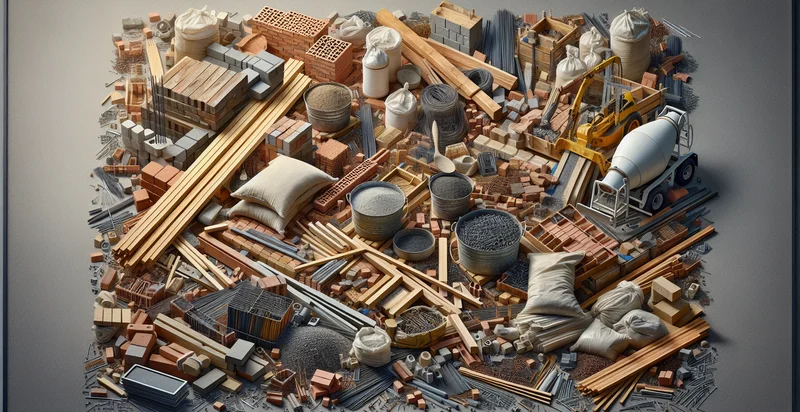Identify construction material
using AI
Below is a free classifier to identify construction material. Just upload your image, and our AI will predict the type of construction material used - in just seconds.

Contact us for API access
Or, use Nyckel to build highly-accurate custom classifiers in just minutes. No PhD required.
Get started
import nyckel
credentials = nyckel.Credentials("YOUR_CLIENT_ID", "YOUR_CLIENT_SECRET")
nyckel.invoke("construction-material", "your_image_url", credentials)
fetch('https://www.nyckel.com/v1/functions/construction-material/invoke', {
method: 'POST',
headers: {
'Authorization': 'Bearer ' + 'YOUR_BEARER_TOKEN',
'Content-Type': 'application/json',
},
body: JSON.stringify(
{"data": "your_image_url"}
)
})
.then(response => response.json())
.then(data => console.log(data));
curl -X POST \
-H "Content-Type: application/json" \
-H "Authorization: Bearer YOUR_BEARER_TOKEN" \
-d '{"data": "your_image_url"}' \
https://www.nyckel.com/v1/functions/construction-material/invoke
How this classifier works
To start, upload your image. Our AI tool will then predict the type of construction material used.
This pretrained image model uses a Nyckel-created dataset and has 26 labels, including Aluminum, Asphalt, Brick, Cement, Ceramics, Composite, Concrete, Fiber Cement, Foam and Glass.
We'll also show a confidence score (the higher the number, the more confident the AI model is around the type of construction material used).
Whether you're just curious or building construction material detection into your application, we hope our classifier proves helpful.
Related Classifiers
Need to identify construction material at scale?
Get API or Zapier access to this classifier for free. It's perfect for:
- Quality Control: This function can be implemented in manufacturing plants that produce construction materials. By automatically identifying false images of construction materials, businesses can ensure that defective or substandard products do not reach the market, thus maintaining product integrity and brand reputation.
- Inventory Management: The false image classification function can assist in managing inventory by verifying received materials. By cross-checking images against a database, it can prevent the acceptance of incorrect materials, reducing waste and improving the efficiency of supply chains.
- Construction Site Safety: This identifier can be utilized on construction sites to ensure that the correct materials are being used for specific tasks. By identifying erroneous images, it helps avoid hazardous substitutions or misuses of materials, thereby enhancing worker safety and compliance with building standards.
- Project Estimation: Construction companies can leverage this function to improve the accuracy of project estimations. By verifying images of construction materials, they can better assess costs and quantities, leading to more accurate budgeting and resource allocation.
- Regulatory Compliance: The function can be used to ensure that materials meet industry regulations and standards. By identifying false images, it helps companies maintain compliance with safety and quality guidelines, minimizing the risk of legal issues or fines.
- Training and Development: Construction firms can utilize the identifier in training programs for employees to recognize and distinguish various construction materials. By integrating false image classification into training modules, new workers can develop their skills in material identification more effectively.
- Customer Verification: Retailers of construction materials can implement this function in e-commerce platforms to verify customer-uploaded images of products before order fulfillment. This ensures that the correct item is shipped, reducing returns and enhancing customer satisfaction.


